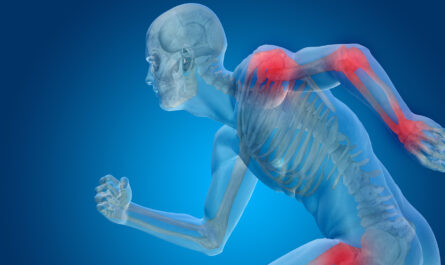Wound care has seen tremendous advances in recent years with the introduction of various wound dressings, therapies and treatment options. However, one area that has lagged behind is accurate and objective wound measurement. Traditionally, wound size was estimated using manual measurements with rulers or tracing methods. This led to variability and inaccuracy in wound size assessment over time. With the advancement of technology, digital wound measurement devices have emerged as a more reliable and precise option for measuring wounds.
What are digital wound measurement devices?
Digital wound measurement devices utilize different technologies like planimetry, stereophotogrammetry and 3D optical scanning to digitally capture and calculate wound dimensions and area. Some key features of these devices include:
– Planimetry: Uses a digital camera along with specialized software to capture images of the wound. The wound boundaries are then traced or automatically detected to calculate surface area.
– Stereophotogrammetry: Utilizes two cameras positioned at an angle to the wound to capture stereoscopic 3D images. Specific wound measurement software then analyzes these images to calculate wound length, width, depth and volume in 3D.
– 3D Optical Scanning: Employs laser, structured light or ultrasound-based scanning techniques to fully digitize the wound topography in 3D. Wound metrics like surface area, depth, epithelial gap and undermining can be accurately derived from these highly detailed 3D models.
– Touchscreen technology: Newer devices feature large touchscreens for clinicians to capture and annotate wound images directly on the device. Measurements are automatically computed.
– Integration with EMR: Many digital measurement systems can integrate with hospital Electronic Medical Records for seamless documentation of wound measurements over time.
– Portability: Mobility and portability are key attributes as these devices need to be used at the point-of-care, including patient homes. Many models are lightweight, wireless and battery powered.
Advantages of Digital Wound Measurement
Increased Accuracy and Reliability
One of the biggest advantages of digital wound measurement devices is their ability to provide highly accurate, consistent and reliable measurements compared to manual techniques. Automated tracing and 3D scanning eliminate human errors and variability between clinicians.
Longitudinal Assessment
Digital records of wound images and metrics over time allow clinicians to accurately track wounds as they heal or deteriorate. Tiny changes in size are detected, enabling timely intervention.
Improved Wound Monitoring
Consistent and objective measurements facilitate better monitoring of a wound’s response to various treatments. Clinicians can determine what’s working and modify approaches based on hard data.
Enhanced Communication
Sharing of digital wound records within care teams and across facilities improves communication regarding a patient’s wound status and progress. Treatment plans can be better coordinated.
Clinical and Economic Benefits
More precise wound measurements lead to optimized treatment, shorter healing times, reduced need for dressings/procedures and lower costs of care. This translates to clinical as well as economic benefits.
Adoption in Various Clinical Settings
Hospitals
Digital Wound Measurement Devices are gaining widespread acceptance in hospital settings to document wounds, especially in busy wound clinics or burn units. They support hospital quality assurance and CMS core measure requirements.
Long-term Care Facilities
Nursing homes and skilled nursing facilities utilize these devices to closely monitor wounds in residents. Remote consultation is also enabled through sharing of digital records with wound specialists.
Home Healthcare
Portable devices allow home health agencies to capture and transmit wound images from patient homes. This facilitates remote wound monitoring and management by clinicians.
Private Wound Care Practices
Many private wound physicians and vascular specialists have integrated digital measurement into their practice workflow for capture of baseline and follow-up wound characteristics.
Future Outlook
Digital wound care technologies including measurement devices will continue advancing wound management practices going forward. Areas where further development is expected include:
– Integration of measurement with wound imaging and analysis of additional metrics like wound edge morphology.
– Development of sophisticated AI capabilities for automated wound border detection and parsing of imaging data.
– Utilization of imaging biomarkers for advanced assessment of wound healing potential.
– Miniaturization and reduced device costs for wider spread adoption across healthcare settings.
– Connectivity options like cloud storage of digital records and integration with telehealth platforms.
– Expansion into wound dressing/technologies with embedded sensors for continuous wound monitoring.
In conclusion, digital wound measurement devices represent an important advancement that is driving more objective, accurate and data-driven wound care. As adoption increases across clinical environments, these technologies will play a pivotal role in optimizing wound treatment and outcomes.
*Note:
1. Source: Coherent Market Insights, Public sources, Desk research
2. We have leveraged AI tools to mine information and compile it



